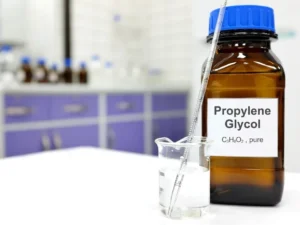Description
Butadiene: Properties, Uses, and Safety Considerations
Butadiene, a colorless gas with a distinctive gasoline-like odor, is an important organic compound that plays a critical role in the production of various synthetic materials. With the chemical formula C₄H₆, butadiene is a diene, meaning it contains two double bonds located at the first and second carbon atoms in its chain. First discovered in the 19th century, this compound has since gained prominence in the petrochemical industry.
Chemical Properties
Butadiene is a highly reactive molecule, characterized by its propensity to undergo polymerization. The two double bonds make it suitable for producing a variety of polymers through addition reactions. It has a boiling point of -4 °C (25 °F) and a melting point of -108 °C (-162 °F), which contribute to its gaseous state at room temperature.
The compound is insoluble in water but soluble in organic solvents such as alcohol, ether, and benzene. Its reactivity allows butadiene to participate in numerous chemical reactions, making it valuable in synthetic chemistry.
Industrial Production
Butadiene is primarily produced from ethylene through a process known as dehydrogenation. This process involves the removal of hydrogen from ethylene to yield butadiene. The primary source of butadiene is the steam cracking of hydrocarbons in the petrochemical industry, a process that breaks down larger hydrocarbons into simpler compounds.
The largest producers of butadiene are integrated oil and gas companies, and the compound is often obtained as a byproduct of ethylene production. Additionally, butadiene can be derived from biomass through well-established chemical processes, which presents a more sustainable pathway for its production.
Applications
Butadiene is most well-known for its role in the manufacturing of synthetic rubber. One of the major applications of butadiene is in the production of styrene-butadiene rubber (SBR), which is widely used in tires, footwear, and other rubber products. SBR is favored for its durability and resistance to wear.
Other applications of butadiene include the production of:
- Acrylonitrile-Butadiene-Styrene (ABS): A tough, impact-resistant plastic used in products ranging from toys to automotive parts.
- Polybutadiene (PB): A polymer utilized in various applications, including tire manufacturing and as an additive to improve the elasticity of other rubber types.
- Butadiene-based chemicals: Compounds like adiponitrile, which is a precursor in the production of nylon, and other important chemical intermediates.
Safety and Environmental Considerations
Butadiene is classified as a hazardous air pollutant and poses significant health risks upon exposure. Short-term exposure can cause irritation of the eyes, skin, and respiratory tract, while long-term exposure has been linked to serious health conditions including cancer. Consequently, workers in industries that utilize butadiene are advised to use protective measures such as personal protective equipment (PPE) and adequate ventilation.
From an environmental perspective, the release of butadiene into the atmosphere can contribute to air pollution and have detrimental effects on ecosystems. Thus, proper handling, storage, and disposal practices are critical for minimizing its environmental impact.
Conclusion
In summary, butadiene is a multifaceted compound that plays an essential role in the production of synthetic materials, especially in the rubber and plastics industries. Understanding its properties, applications, and safety considerations is vital for those working with this chemical. As industries continue to seek sustainable practices, the exploration of bio-based alternatives to traditional butadiene production may offer promising advancements in environmental stewardship. Nonetheless, awareness of potential health risks must underscore all activities involving butadiene, ensuring safe practices and regulatory compliance within its larger industrial context.














Reviews
There are no reviews yet.